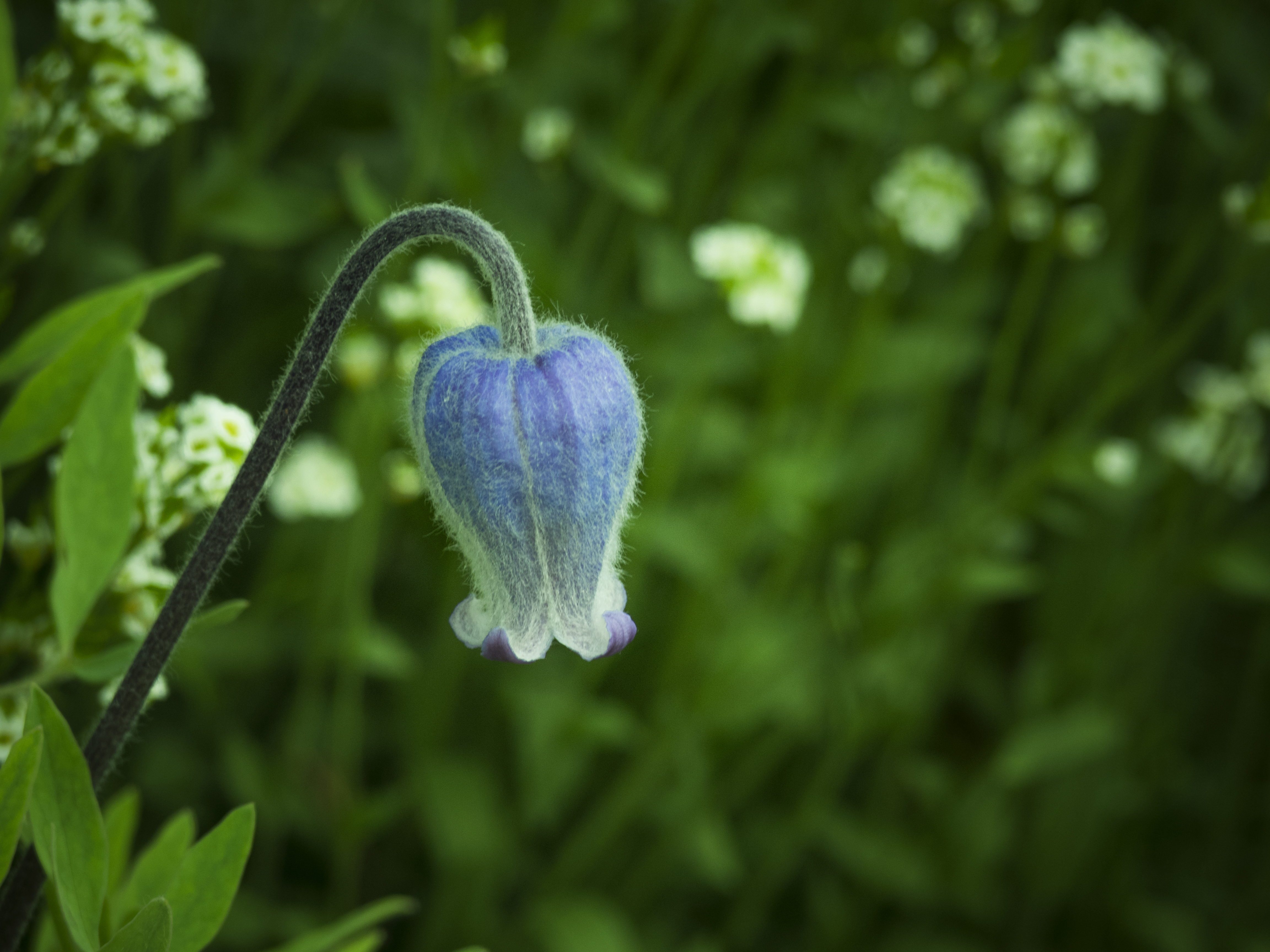Hairy clematis
(Clematis hirsutissima)

Description
Clematis hirsutissima, commonly known as the hairy clematis, is a beautiful and unique species of flowering plant that belongs to the Ranunculaceae family. This species is native to North America, particularly to the western parts of the United States, where it can be found growing in rocky areas, woodlands, and along stream banks. Description and Characteristics Clematis hirsutissima is a deciduous vine that can grow up to six feet tall and spreads up to four feet wide. The plant has wiry stems that twine around any nearby support, and its leaves are deeply lobed, with three to five leaflets. The plant's leaves have a dark green color and are covered with a hairy texture, which is where the plant gets its common name "hairy clematis." The plant produces small, fragrant, bell-shaped flowers that are approximately one inch in diameter. The flowers bloom in late spring to early summer and have a pale pink to lavender color. The plant's fruit is a distinctive cluster of dry, feathery, and plumose achenes, which are dispersed by the wind. Habitat and Distribution Clematis hirsutissima is native to the western parts of North America, from British Columbia to California and as far east as Montana. The plant can be found growing in rocky areas, along stream banks, and in open woodlands at elevations between 3,000 and 9,000 feet. Cultivation and Propagation Clematis hirsutissima is an excellent plant for home gardens, as it is relatively easy to grow and maintain. The plant prefers well-drained soil and a sunny to partly shaded location. The plant can also tolerate some drought conditions but requires regular watering during the growing season. Propagation of Clematis hirsutissima can be done through seeds, cuttings, or division. Seed propagation is the easiest method, as the plant produces abundant seeds, which can be collected and sown in a suitable growing medium. Cuttings can also be taken in late spring or early summer and rooted in a suitable rooting hormone. Division can also be done in the spring by separating the plant's rhizomes. Uses Clematis hirsutissima is mainly used for ornamental purposes due to its beautiful flowers and unique foliage. The plant can be grown on trellises, fences, or other structures, making it an excellent choice for adding vertical interest to a garden. The plant's hairy foliage also adds an interesting texture to garden beds and borders. The plant is also used in traditional medicine to treat various ailments, including headaches, rheumatism, and skin irritations. The plant's roots and leaves contain various alkaloids and glycosides, which have anti-inflammatory and analgesic properties. Conservation Status Clematis hirsutissima is not currently considered a threatened or endangered species, although its natural habitat is being threatened by human activities such as logging, mining, and urbanization. Efforts are being made to protect and conserve the plant's natural habitat, and the plant is being cultivated in nurseries and botanical gardens to ensure its continued survival. Conclusion Clematis hirsutissima is a beautiful and unique species of flowering plant that is native to North America. The plant's hairy foliage and beautiful flowers make it an excellent choice for home gardens, while its medicinal properties have made it a valuable plant in traditional medicine. Efforts to protect and conserve the plant's natural habitat are essential to ensure its continued survival.
Taxonomic tree:







